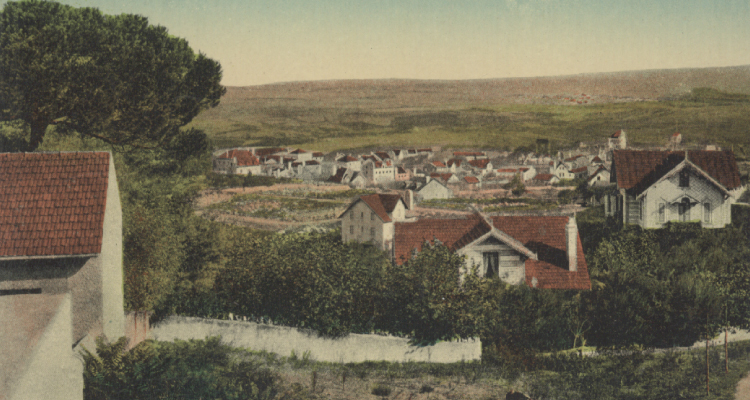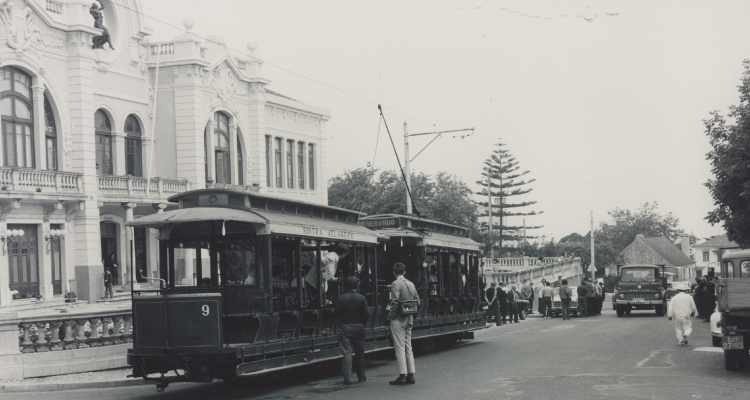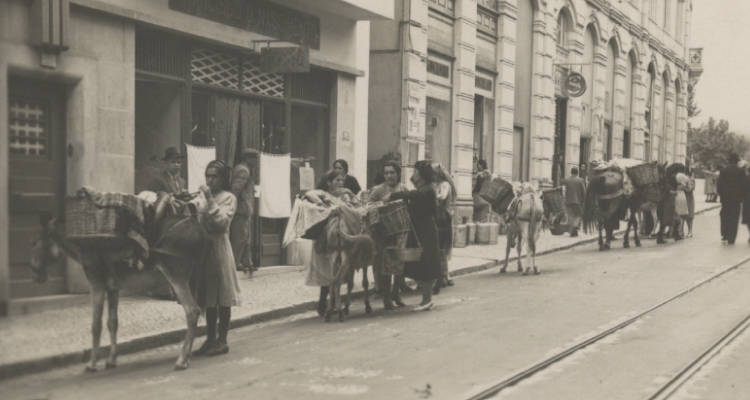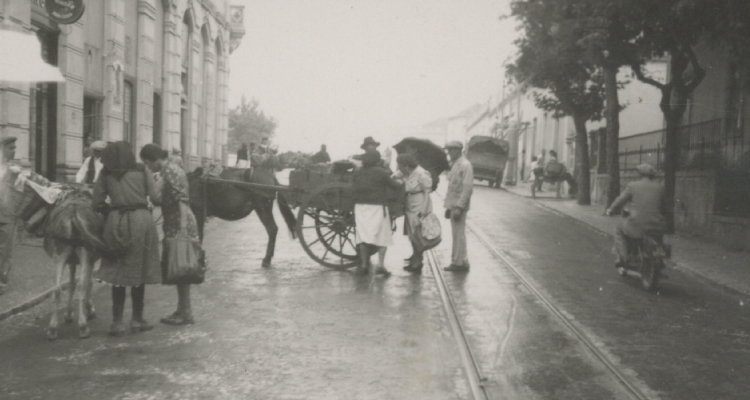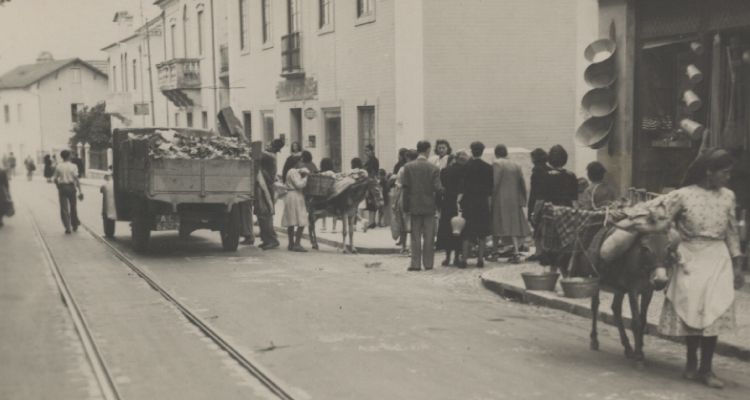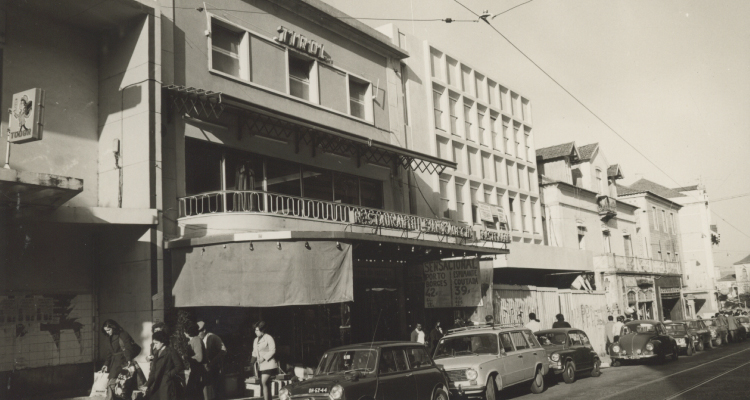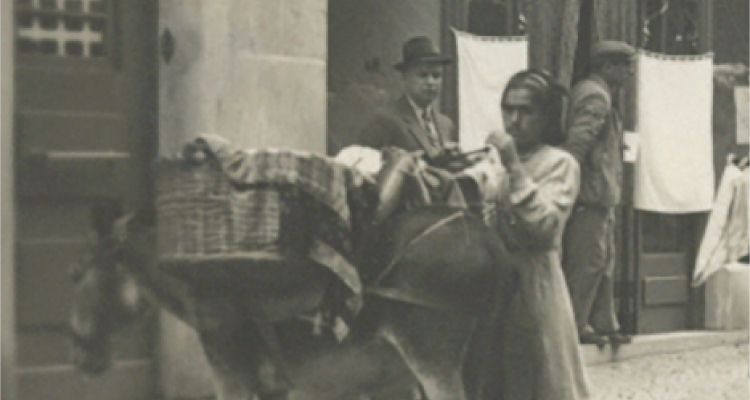
- Palácio de Valenças
- Volta do Duche
- Fonte Mourisca
- Volta do Duche
- Queijadas de Sintra
- Paços do Concelho
- Largo Virgílio Horta
- Cadeia Comarcã
- Estação
- Correnteza
- Rua Alfredo da Costa
- Rua Alfredo da Costa
- Estefânia
- Estefânia
- Estefânia/ Desidério Cambournag
- Casino
- Cineteatro Carlos Manuel
- Elétrico de Sintra
Estefânia
A dimensão que Sintra atingira no século XIX impunha o crescimento da vila. O papel que há séculos lhe cabia enquanto estância de lazer e recreio da sociedade lisboeta havia sido reforçado com a construção, no alto da serra, do palácio romântico do rei D. Fernando II e democratizado pela chegada da linha férrea.
O novo bairro de Sintra ganhou o nome de Vila Nova da Estefânia em homenagem à jovem princesa alemã que casou com o rei D. Pedro V. A Vila Nova era uma zona onde, até 1874, existiam apenas algumas casas. Anos mais tarde, com a criação do percurso de elétrico, esta área transformou-se num novo e moderno centro burguês, acentuando o contraste com a Vila Velha de Sintra.
O novo bairro de Sintra ganhou o nome de Vila Nova da Estefânia em homenagem à jovem princesa alemã que casou com o rei D. Pedro V. A Vila Nova era uma zona onde, até 1874, existiam apenas algumas casas. Anos mais tarde, com a criação do percurso de elétrico, esta área transformou-se num novo e moderno centro burguês, acentuando o contraste com a Vila Velha de Sintra.
Estefânia
The reputation that Sintra had reached in the 19th century required the town to grow. The role it played, for the last centuries, as a leisure and recreation resort of Lisbon high society had been reinforced with the construction, on top of the mountain, of the romantic palace of King Fernando II and democratized by the arrival of the railroad.
The new district of Sintra was named Vila Nova da Estefânia [New Town of Estefânia] in honour of the young German princess who married King Pedro V. Vila Nova was an area where, until 1874, there were only a few houses. Years later, with the creation of the tramway route, this area became a new and modern bourgeois centre, accentuating the contrast with Vila Velha de Sintra [Sintra’s old town].
The new district of Sintra was named Vila Nova da Estefânia [New Town of Estefânia] in honour of the young German princess who married King Pedro V. Vila Nova was an area where, until 1874, there were only a few houses. Years later, with the creation of the tramway route, this area became a new and modern bourgeois centre, accentuating the contrast with Vila Velha de Sintra [Sintra’s old town].



